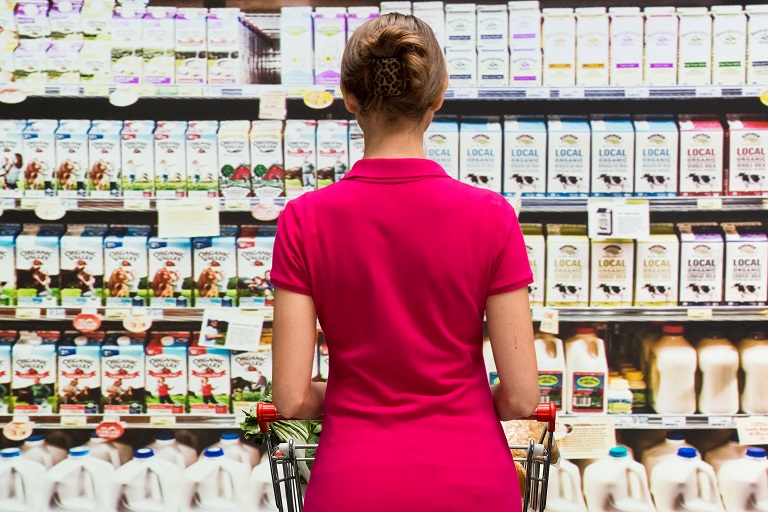Shelf Life and Stability Testing Services
Helping you determine the shelf life of your products.
The shelf life of a product must be backed by reputable data in order to meet the requirements of government regulatory agencies and retail partners. Eurofins' network of laboratories delivers the highest levels of analytical quality and service, coupled with years of experience in shelf life determinations across a variety of product types, to deliver results you can trust.
Let us help you find your solution
Our stability and shelf life laboratories offer multiple atmospheric conditions including the six standard conditions below. Other conditions may also be accommodated upon request. Additionally, we have the ability to determine the photostability of products using controlled lighting conditions.
Condition | Environment
- Frozen | -15ºC
- Refrigerated | 5ºC
- Ambient | 25ºC / 60% RH
- Intermediate | 30ºC / 65% RH
- Tropical | 30ºC / 75% RH
- Accelerated | 40ºC / 75% RH
Important components of shelf-life testing

Every product is unique, which is why we tailor each and every study to ensure that the shelf life determination is sound. We consider a number of factors when setting up the testing protocol for a given study. These factors include:
- Microbiology (mold growth, aerobic bacteria, pathogenic organisms)
- Water activity and pH (changes over time which could result in microbial susceptibility)
- Rancidity (Oxidation of fats & oils)
- Label Claims (Degradation of vitamins, nutraceutical active ingredients, and other unstable compounds, as well as loss or gain of moisture)
- Organoleptic (Monitoring of color, texture, aroma, packaging, and/or taste as the product ages)
Using state-of-the-art stability chambers our shelf life testing protocols ensure that products are kept at specific temperatures and humidity levels throughout the duration of the study. The product is then evaluated at specific intervals to monitor any potential degradation in quality or food safety. Studies proceed until it is determined that the product is no longer acceptable based on agreed criteria.
Industries we serve
- Animal feed
- Dietary supplements
- Medicated feed
- Pet food
- Human food
- Food additives and ingredients
- Dairy products
- Produce
- Juice & Beverage products
- Frozen foods
- Confectionary and candies
- Assorted snacks
- and more.
Organoleptic & Sensory Testing
Eurofins network of laboratories offers a variety sensory analysis options to be performed during our stability and shelf life studies. Conducted by our trained sensory panel, these tests can be custom tailored to clients specific product needs. Aspects such as color, texture, aroma, packaging, separation, stratification, and taste can all be tracked throughout a product’s shelf-life. These attributes are of high importance to a consumer when selecting a product, which can be otherwise not apparent in analytical data alone.
In addition, our teams offer both descriptive and discrimination analysis. Discriminative sensory analysis can provide useful data from multi point-scales, while we also offer Paired Comparison and Triangle tests. Descriptive techniques allow us to determine how products physical properties change over time and evaluate product acceptance.
Testing options by a Eurofins trained sensory panel:
- Visual appearance, small panel
- 2-3 person group evaluating appearance, aroma, and texture
- Visual appearance, medium panel
- 5-6 person group evaluating appearance, aroma, and texture
- Organoleptic sensory, small panel
- 2-3 person group evaluating appearance, aroma, taste, and texture
- Organoleptic sensory, medium panel
- 5-6 person group evaluating appearance, aroma, taste, and texture
- Organoleptic sensory, large panel
- 10 person group evaluating appearance, aroma, taste, and texture
Rancidity Testing
Rancidity testing determines the level of oxidation in a sample. When lipids (fats and oils) go rancid, its nutritional value is compromised, and the lipids will take on a rancid taste and odor. Proper rancidity testing is an essential component in determining the shelf life of the product.
The scientists of Eurofins network of laboratories will monitor rancidity, tracking primary and secondary indicator results as the study progresses. It is important to note the time it takes for these indicators to reach their threshold values in order to establish a product’s shelf-life.
Important components to rancidity shelf-life testing:
- Peroxide Value (PV)
- Determines the number of peroxides in the lipids. Peroxides are the initial indicators of lipid oxidation. Peroxides will continue to react and produce secondary products such as aldehydes.
- p-Anisidine (p-AV)
- Indicates the number of aldehydes in the lipids. This test is often paired with PV, as aldehydes are the secondary indicators of oxidation. Aldehydes can produce strong objectionable flavors and odors at relatively low levels.
- TBA Rancidity (TBAR)
- Measures aldehydes (primarily malondialdehyde) created during the oxidation of lipids. This analysis is primarily useful for low-fat samples, as the whole sample can be analyzed rather than just the extracted lipids.
- Free Fatty Acids (FFA)
- Determines the number of fatty acids that have been liberated from their triglyceride structure. Free fatty acids can produce strong flavors and odors at relatively low levels. Free fatty acids are hydrolytic rancidity (not oxidation) products and can be caused by microbial activity.
- Oxidative Stability Index (OSI)
- Indicates how resistant a sample is to oxidation. The samples are subjected to heat while air (containing oxygen) is streamed through it. This process accelerates the oxidation process causing most oils to go rancid quickly. The samples are monitored and the time required for the sample to become rancid is determined. Samples that require longer times to become rancid, and more stable.
Your partner in shelf-life and stability testing. Let's find your solution.











